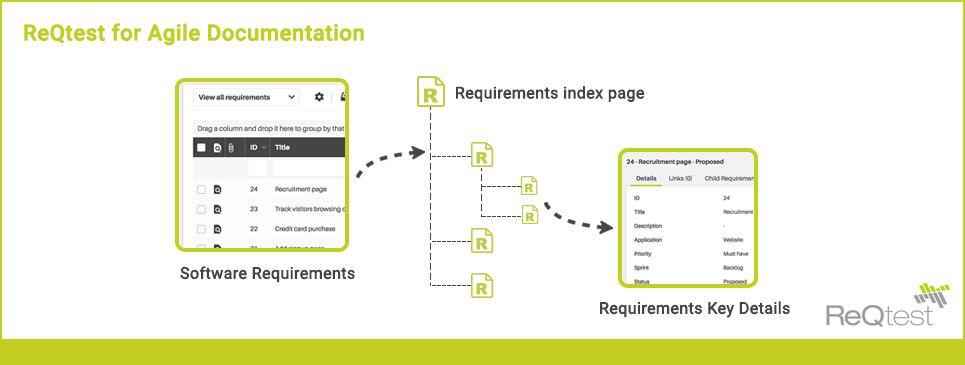March 12, 2019
Agile Documentation – 6 Efficiency Hacks for Agile Projects’ Documentation
Agile documentation is an approach to create concise documents that serve the situation at hand. In traditional software development projects, there is comprehensive documentation which is perceived as a risk reduction strategy.

In agile projects, a high level of documentation increases the overall project risk as it lowers down the adaptability to changes.
The documentation should be as efficient as possible in a way it achieves relevant goals in agile software development projects. In this article, you will find 6 hacks that will guide you while creating documents for your agile projects.
1) Work with executable specifications
In traditional software development projects, there are specification documents such as requirement specification, architecture specification, or designs specification. In an agile project, there are executable specifications in the form of tests.
In this Test Driven Development (TDD), you take a Just-In-Time (JIT) approach to write the detailed specifications. There is a Single Source Information that is the test to outline the requirements/architecture/design and validate your work.
2) Document as late as possible
As a part of the agile strategy, you document as late as possible, only before you require them. This practice is known as “document late” that means the best time to write system overviews will be towards the end of the development of a release.
This way you document what you have actually built. The majority of the user and support documentation is pushed to the end of the lifecycle to ensure high quality. You still take notes throughout the development for capturing critical information that will help to formulate the documents at the end.
3) Simplify documentation
In agile documentation approach, one core principle followed is that the comprehensive documentation doesn’t give surety of the project success. Rather it could lead to failure. So the Agile Modeling (AM) practices are followed to use the simplest tools, to create simple content and to depict models simply.
This means rather than writing a document with 50 pages, a 5-page document with bullet points can be good enough to provide a useful context.
The higher the number of pages in the document, the higher would be the chances of error. A short and concise document is easier to maintain and lesser prone to errors. In the agile documents, the high-level overview may not have detailed information but it does provide a map to dive in the source code.
4) Avoid overlapping documents
The documentation should be just good enough to serve the purpose of dealing with the situation at hand. This requires building larger documents from smaller ones. You can create Wikis sort of documentation to create different single pages for single topics.
For example, you can have a single page describing the user interface architecture. There can be a single page to describe the user interface flow diagram. A table of contents pages for the system documentation and system guides. This will also ensure that there is no overlap of information.
5) Purpose oriented documents
In an agile project, you should only create a document to cater to some immediate goal of your project. In the case of documentation, one size never fits all. Each system has its own unique documentation needs that also mean you cannot reuse the repeatable process to create documents.
Start with identifying the potential users of your document. After identifying the users, discuss with them their needs and negotiate with them to agree upon a minimal subset of documentation they will actually need.
6) Ensure good communication
Good communication is essential for understanding rather than documentation. The agile documentation supports the maintenance developers to understand how the system works so that they can evolve it over time. There is no use of documenting things which will not be of any use.
The purpose of agile documents is to help the support and operations staff with easy to understand, concise information. Documentation that facilitates knowledge transfer is only possible when effective communication with all the project stakeholders is there throughout the project.
ReQtest – Agile Documentation Tool
For a Test Driven Development (TDD), ReQtest is a one-stop shop for creating and maintaining documentation in your agile projects. ReQtest offers a suite of modules such as Test Management, Requirements Management, and Bug Tracking wherein you can collaborate with the project stakeholders while creating documents. Signup for a free ReQtest trial!
Summary
From the above 6 hacks, we can conclude that the agile documentation follows the same principles as laid out in Agile Methodology to achieve agility. Agility gives the ability to be highly responsive to changes and make improvements in the way you document your agile project.
Share article